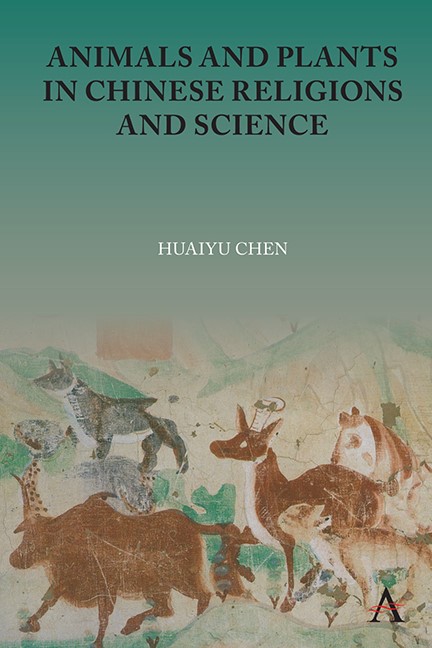Book contents
- Frontmatter
- Contents
- Acknowledgments
- List of Illustrations
- Introduction
- 1 Plant Science and Technology in Medieval China
- 2 Ordering Plants in the Buddhist World: A Medieval Botanical Taxonomy
- 3 Animal Divination and Climate: An Environmental Perspective on the Cult of the Pig
- 4 Zoomancy in Medieval China
- 5 The Changing Images of Zodiac Animals in Medieval Chinese Buddhist Literature
- 6 The Were-Tigers in Medieval China and Its Asian Context
- 7 The Animal Turn in Asian Studies and the Asian Turn in the Animal Studies
- Bibliography
- Index
7 - The Animal Turn in Asian Studies and the Asian Turn in the Animal Studies
Published online by Cambridge University Press: 15 November 2023
- Frontmatter
- Contents
- Acknowledgments
- List of Illustrations
- Introduction
- 1 Plant Science and Technology in Medieval China
- 2 Ordering Plants in the Buddhist World: A Medieval Botanical Taxonomy
- 3 Animal Divination and Climate: An Environmental Perspective on the Cult of the Pig
- 4 Zoomancy in Medieval China
- 5 The Changing Images of Zodiac Animals in Medieval Chinese Buddhist Literature
- 6 The Were-Tigers in Medieval China and Its Asian Context
- 7 The Animal Turn in Asian Studies and the Asian Turn in the Animal Studies
- Bibliography
- Index
Summary
Introduction
As I have briefly noted in the introduction, my discussions in this book might interest readers who work on Animal Studies and Asian Studies. Although the “animal turn” did not appear first in Asian Studies, it seems that this turn has arrived in the contemporary scholarship of Asian Studies. More books and articles on animals in Asia have become available gradually from time to time in the past decade. Beyond America and Europe, more publications in Asia also pay attention to animal studies. At least two journals in Taiwan and mainland China, such as Cheng Kung Journal of Historical Studies 成大歷史學報 and the World History Review 世界歷史評論, organized special issues on animal history. Other special issues on posthuman history also published several articles on animal history. In addition, a publisher in Shanghai is planning a book series on animal history for the first time in the Chinese-language scholarly community. In the meantime, it is equally astonishing to witness the growing interest in Asian Studies in the field of Animal Studies. For instance, the animals and religion group within the American Academy of Religion strongly promoted panels and papers on animals and Asian religions at almost every annual conference. My observations from these conferences suggest that numerous scholars in religious studies have realized that Asian traditions played vital roles in understanding the sophisticated relationships between animals and humans and their implications for shaping our history and future shared with animals. Various animal studies networks in America, Asia, and other parts of the world often included papers and presentations on animals in Asian religions and history or literature.
As a concluding section, this chapter offers my critical assessment of a batch of important publications that have greatly enriched contemporary scholarship in animal studies and Asian studies. These publications particularly illustrate that animal studies is a transdisciplinary trend in Asian Studies that has crossed the traditional boundaries among the studies of history, literature, and religions. I have selected six representative publications to evaluate how the authors combine both new approaches in animal studies and traditional methods of textual analysis and close reading to reveal multiple facets of the cultural, medical, symbolic, and spiritual roles and functions of animals in traditional and contemporary religious, literary, and historical cultures in Asia.
- Type
- Chapter
- Information
- Animals and Plants in Chinese Religions and Science , pp. 145 - 168Publisher: Anthem PressPrint publication year: 2023

